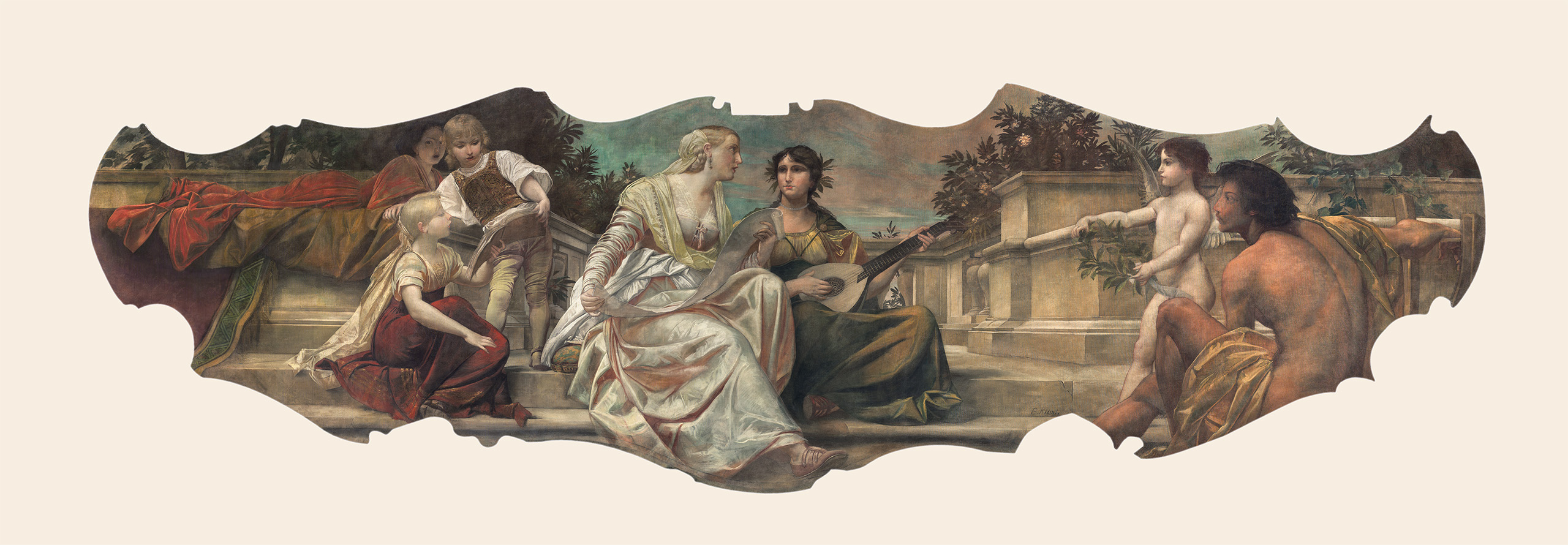
Allegory of Theatre Art
Ernst Klimt, Vienna, 1885, glue tempera
The Croatian National Theatre Ivan pl. Zajc, Rijeka (proscenium)
On Ernst Klimt’s large painting for the wall above the stage
(proscenium) we recognize an artistic conception similar to that of Franz Matsch. The painter placed two female musicians at the centre of the composition, resembling the female protagonists in Matsch’s painting Allegory of Comic Opera. A female figure in a sumptuous bright dress is shown singing as she holds a scroll with a musical notation in her hands while accompanied on the lute by another female figure in a brown-toned dress. To the left, there is a group of children also participating in singing, and on the right, the god of poetry Orpheus, who is watching the scene closely and with approval, leaning on a large lyre. He is accompanied by Amor, who is preparing to present a singing group with a laurel wreath to honour their excellent performance. By linking ancient mythology with Renaissance ambience and characters, Ernst Klimt highlighted the timeless power of musical creation as the foundation of all theatre art.